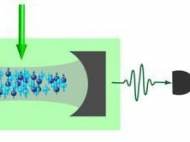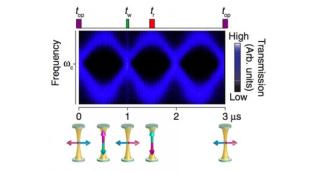MIT research of quantum memory in ultra-cold atoms
 Researchers at MIT have managed to demonstrate an atomic quantum memory that can detect the polarization of a photon (“polarization quantum bit”), generate a signal announcing successful storage of the information, and generate a second photon with the same polarization whenever the system receives the instruction to read the information, in what is a key step forward in the design of quantum information networks.
Researchers at MIT have managed to demonstrate an atomic quantum memory that can detect the polarization of a photon (“polarization quantum bit”), generate a signal announcing successful storage of the information, and generate a second photon with the same polarization whenever the system receives the instruction to read the information, in what is a key step forward in the design of quantum information networks.
Scientists are rapidly achieving important breakthroughs in quantum photonics, from obtaining precise manipulation of four photons at the same time to the very first quantum processors. But just like in traditional electronics, a quantum computer can’t be achieved with information processing alone. A reliable way to store and retrieve quantum information is also required.
The uncertainty principle (or Heisenberg principle) becomes problematic at the atomic scale, where observing a phenomenon can destroy the phenomenon itself. In the case of a quantum memory, attempting to read data can destroy the data itself. To solve this problem in developing a quantum memory, MIT researchers chose to generate a signal that indicates the successful storage of the polarization of a light beam in a cold atom gas, cleverly designing the system in such as way that the generation of such a pulse wouldn’t erase the stored data.
The indication signal designed by the team only announces that the pulse has been stored, without revealing details of its polarization, so the quantum information is kept safe. The phenomenon related to the indication of the successful storage (heralded storage) occurs rarely (once in a million tries in the team’s experiments) but, when it does, the stored photon can be recreated later on with good efficiency. “The heralding process may thus be viewed as a quantum non-demolition measurement where a single photon is detected and stored while preserving its polarization,” a paper published by the group explains.
The information itself is stored in two groups of 8000 Cesium atoms each, at the incredibly low temperature of only 30 millionths of a degree above absolute zero (-273.15°C). When a “write” light beam is directed at the two ensembles (or magnons), each ensemble will only absorb one specific kind of polarization (left circularly polarized vs. right circularly polarized light) and later emit the herald signal — which will be exactly the same regardless of the magnon’s polarization.
The information can then be retrieved by firing a read pulse, taking advantage of the fact that the two ensembles will re-emit a photon with the same polarization that they absorbed.
By testing their system with a number of possible inputs and observing the resulting output signal, the team found out that their approach works better than previous solutions, obtaining fidelity as high as 90%. A 10% chance of losing a stored bit could still seem unacceptable. If this were the case for a standard computer, it would mean (assuming no data checks are being made) that writing and later reading a 200 bits file would only be successful less than once in a billion tries. That can be improved with the usage of quantum computing algorithms which improve fidelity simply by repeating the process a number of times and taking the most often occurring result as the final one.










Leave your response!